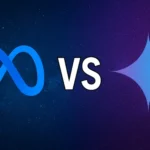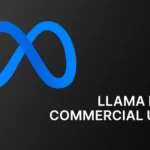The idea of training your own large language model (LLM) like Meta’s Llama 4 can seem like a monumental task, reserved only for giant tech labs with thousands of engineers. And in some ways, it is. But the term “training” can mean two very different things. While creating a new Llama model from scratch is a multi-million dollar endeavor, adapting an existing one for your specific needs is now more accessible than ever.
This guide will break down the entire process in simple, easy-to-understand steps. We will demystify the complex stages that Meta undertakes to build a base model and then walk you through the practical, achievable steps you can take to fine-tune a Llama model on your own data.

The Two Levels of “Training” a Llama Model
First, it’s crucial to understand the difference between the two main types of training. This will clarify what’s possible for you versus what’s done by a massive organization like Meta.
- Pre-training (Building the Base Model): This is the process of creating a new foundation model from zero. It involves feeding the model trillions of tokens of data from the internet, books, and code to build its core knowledge and reasoning abilities. This is not something individuals or most companies can do.
- Fine-tuning (Customizing the Model): This is the process of taking an already pre-trained Llama model and further training it on a smaller, custom dataset. This adapts the model for a specific task, like answering questions about your company’s documents or writing in a particular style. This is highly achievable.
This guide will first explain the massive-scale pre-training process so you understand how the base models are made, then provide a practical guide to fine-tuning.
Stage 1: Pre-Training – How Meta Builds the Brain
Creating a model like Llama 4 from scratch is a monumental engineering feat that happens in two key steps. Understanding this process shows why these models are so powerful.
Step 1: Assemble a Supercomputer
You can’t pre-train a Llama model on a regular computer. It requires a massive, purpose-built compute cluster.
- GPU Clusters: Meta uses thousands of NVIDIA H100 80GB GPUs running in parallel. Think of a single GPU as a powerful engine; Meta uses a fleet of thousands of them working as one. A single 8-GPU server can draw over 5 kilowatts of power, requiring a dedicated data center.
- High-Speed Interconnects: To make thousands of GPUs act as a single brain, they need incredibly fast connections. Technologies like NVLink and InfiniBand act as a super-highway system, allowing data to be shared between GPUs almost instantly. Without this, the system would grind to a halt.
Step 2: Curate Trillions of Tokens of Data
The model’s knowledge comes from the data it’s fed. For Llama 4, this was an unprecedented amount—up to 40 trillion tokens. (A token is roughly 4 characters of text). This data comes from a mix of public sources, licensed books and papers, and, controversially, proprietary data from Meta’s own platforms like Instagram and Facebook.
The data isn’t just dumped into the model. It goes through a sophisticated cleaning pipeline:
- Sourcing: Raw data is collected from web crawls, code repositories, and other sources.
- Cleaning: HTML code, ads, and other junk are removed. Low-quality documents are filtered out.
- Deduplication: The pipeline removes identical and near-identical documents to prevent the model from overfitting on repeated content.
- Language Curation: For Llama 4, Meta focused heavily on multilingualism, ensuring data from over 100 languages was included to improve its global capabilities.
Only after this intense process is the data ready for the multi-million dollar pre-training run.
Stage 2: Alignment – Teaching the Model to Be Helpful
After pre-training, the result is a “base model.” It’s incredibly knowledgeable but doesn’t know how to be a useful assistant. The alignment stage sculpts this raw intelligence. For Llama 4, Meta uses a revamped, three-step process.
Step 3: Instruction Tuning (Supervised Fine-Tuning – SFT)
First, the base model is taught the basic format of a conversation. It’s fine-tuned on a high-quality dataset of instruction-response pairs, often written by humans. This step teaches the model how to follow commands and answer questions. For Llama 4, Meta specifically used harder, more complex examples to build capability from the start.
Step 4: Learning Human Preferences (RLHF Reward Model)
Next, a “Reward Model” is trained. This is how the AI learns what a “good” answer looks like to a human. The process is:
- A prompt is given to the instruction-tuned model, which generates several different answers.
- Human evaluators look at these answers and rank them from best to worst.
- This human preference data is used to train the Reward Model. Its job is simple: to output a high score for answers humans would like and a low score for answers they wouldn’t.
Step 5: Getting Better with Reinforcement Learning (RL)
In the final step, the AI model is fine-tuned using the Reward Model as a guide. The LLM generates a response, the Reward Model scores it, and that score is used as a “reward” signal to update the LLM’s weights. This process iteratively pushes the LLM to generate answers that will receive a higher and higher score, effectively aligning it with human preferences for helpfulness and safety.
Stage 3: Fine-Tuning – A Practical Guide to Train Your Own Llama
This is the stage where you can create your own specialized Llama model. The goal is to take a pre-trained, aligned model released by Meta and adapt it to your specific task using a technique called Parameter-Efficient Fine-Tuning (PEFT). The most popular method by far is QLoRA.
What is QLoRA? The Magic of Efficient Fine-Tuning
QLoRA (Quantized Low-Rank Adaptation) is a breakthrough technique that makes it possible to fine-tune massive models on a single GPU. In simple terms, it works by:
- Quantizing: The huge, pre-trained base model is “shrunk” by loading it in 4-bit precision instead of the standard 16-bit. This drastically reduces the memory required.
- Freezing: All the original weights of this shrunken model are frozen; they will not be trained.
- Adapting: Small, trainable “LoRA adapters” are inserted into the model’s layers. Only these tiny adapters (a fraction of the model’s total size) are updated during training.
This means you get the benefit of the massive pre-trained model’s knowledge while only needing enough memory and compute to train the small adapters.
A Step-by-Step Guide to Fine-Tuning
Here is a practical workflow for fine-tuning a Llama model using QLoRA.
Step 1: Get the Right Tools
The open-source community, led by Hugging Face, has created an incredible toolkit. You don’t need to build from scratch. Your core stack will be:
transformers: For loading the Llama model and tokenizer.datasets: For loading and processing your training data.peft: For implementing the QLoRA technique.bitsandbytes: For handling the 4-bit quantization.trl: For running the supervised fine-tuning training loop.
Step 2: Prepare a High-Quality Dataset
This is the single most important step. Your model will only be as good as your data. A good dataset consists of hundreds or thousands of high-quality examples formatted for your task (e.g., pairs of questions and answers). Remember: garbage in, garbage out.
Step 3: Set Up the Training Script
Using the libraries above, you will write a script that:
- Loads the base Llama model in 4-bit precision using
bitsandbytes. - Loads your custom dataset.
- Creates a
LoraConfigusingpeftto define how the adapters are applied. - Wraps the base model with the PEFT configuration.
Step 4: Configure and Launch Training
You’ll define your training arguments, including the learning rate (a starting point of $3 \times 10^{-4}$ is often effective for LoRA), the number of training epochs, and the batch size. Then, you’ll use the SFTTrainerfrom thetrl` library to launch the training process.
Step 5: Merge and Save Your Model
Once training is complete, you can merge the trained LoRA adapter weights with the original model weights to create a new, standalone, fine-tuned model ready for deployment.
Conclusion
While “training a Llama AI model” from scratch remains the domain of tech giants, the power to customize and specialize these incredible models is now firmly in the hands of the broader developer community. By understanding the distinction between massive-scale pre-training and accessible fine-tuning, you can leverage the billions of dollars of research that went into creating the base models.
Using powerful open-source tools like Hugging Face and efficient techniques like QLoRA, you can follow a clear, step-by-step process to adapt a state-of-the-art Llama model to your unique needs, unlocking new capabilities for your projects and applications.
FREQUENTLY ASKED QUESTIONS (FAQ)
QUESTION: Can I train a Llama 4 model on my gaming PC?
ANSWER: You cannot pre-train a model from scratch. However, thanks to QLoRA, you can fine-tune even very large Llama models (70B+ parameters) on a high-end consumer gaming PC, provided it has a powerful GPU with a good amount of VRAM (e.g., an NVIDIA RTX 4090 with 24GB).
QUESTION: What is the main difference between pre-training and fine-tuning?
ANSWER: Pre-training is about building general knowledge into the model from a massive, diverse dataset (trillions of tokens). It takes months and costs millions. Fine-tuning is about teaching a pre-trained model a specific skill or style using a much smaller, targeted dataset (thousands of examples). It can take hours or days and is far more affordable.
QUESTION: Why is dataset quality so important for fine-tuning?
ANSWER: The fine-tuning process adapts the model to the specific data it sees. If your data is low-quality, irrelevant, or incorrectly formatted, the model will learn those bad patterns. A small, clean, high-quality dataset will always produce better results than a large, messy one.
QUESTION: What is RLHF and do I need to do it myself?
ANSWER: RLHF (Reinforcement Learning from Human Feedback) is the complex process Meta uses to align its models to be safe and helpful assistants. For custom fine-tuning, you typically do not need to perform RLHF yourself. You start with a base model that has already gone through this process, and then apply Supervised Fine-Tuning (SFT) with QLoRA to teach it your specific task.






